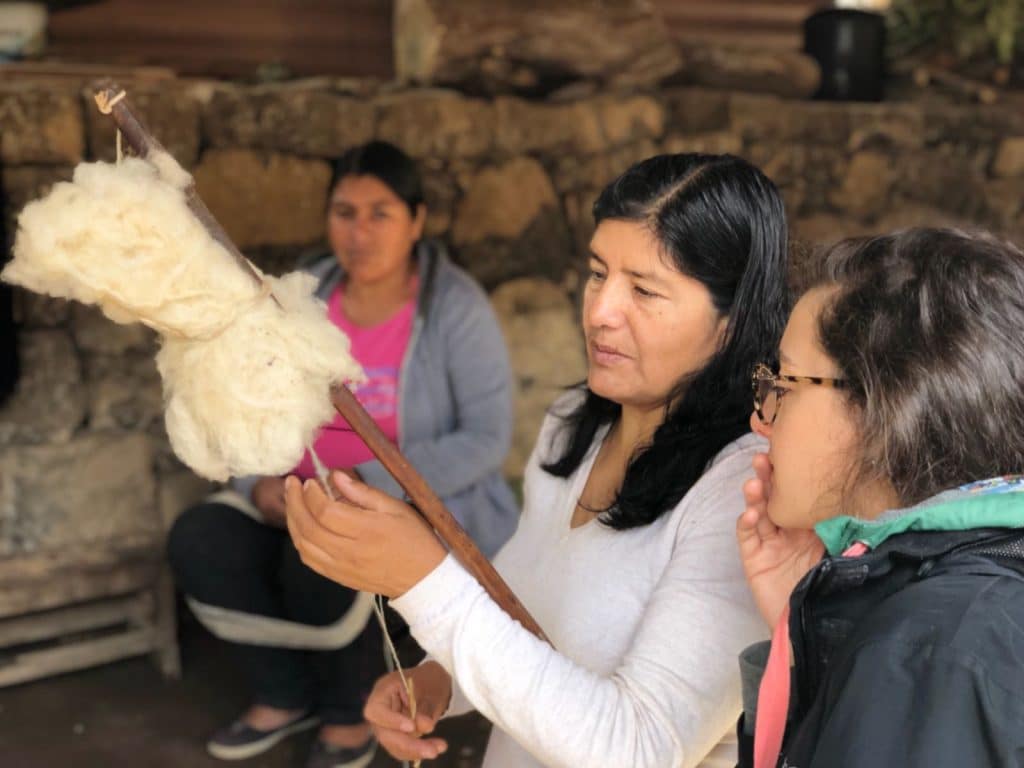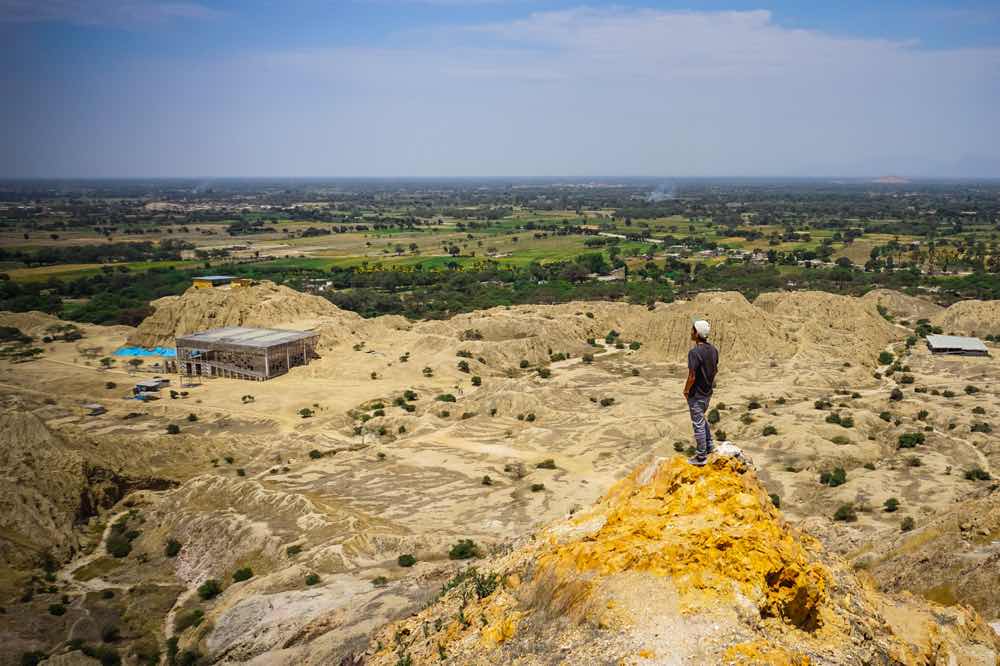The key moments
A rural stay close to the inhabitants allows you to discover Northern Peru, less known than the big tourist circuits. You will stay with our local partners in rural communities and share their lives by participating in daily activities.
Highlights of the trip
- Rural homestay immersion in Peruvian culture
- Enjoy the Chocolate Route in Chazuta
- Travel by canoe on the Huallaga river and in the Santa Elena conservation area
- Take part in the ceramics and ecological paper workshop in Chazuta
- Harvest coffee in Cuispes
- Walk to Yumbilla, one of the highest waterfalls in the world
- Discover the fortified city of the Chachapoya people: Kuelap
- Explore the Leymebamba Museum with its mummies
- Learn traditional weaving and paint your sarcophagus
- Cook a Pachamanca, a traditional dish that is cooked in the ground
- Discover the Pyramids of Tucume and visit the Tumbas Reales Museum
- Learn all about the Moche and Chimu cultures in the sites of El Brujo, Chan Chan and Temples of the Sun and the Moon
Detailed itinerary
Day 1 – Tarapoto-Chazuta
We will pick you up at Tarapoto airport and drive you to the community of Chazuta, located 40 km away or an hour’s drive from Tarapoto, for the first part of your rural stay.
Welcome and dinner with your host family.
Day 2 – Rural homestay in Chazuta
Welcom at the community of Chazuta, located on the banks of the Huallaga River, 260 m above sea level, whose waters will feed further down the great Amazon River.
People will be happy to show you their expertise in chocolate, ceramics and paper made from banana bark during your rural stay.
Chazuta is a community that has been particularly marked in the past by the presence of drug traffickers. There were many coca fields around here, and the government responded with violence that many still remember.
Women wanted, sometimes against the advice of men, who are often macho enough, to recreate the traditional cocoa activity. Chazuta chocolate is recognized nationally and I would even say internationally since it regularly wins distinctions in major international competitions such as in Paris or New York.
The fine ceramic of Chazuta and with recognizable scenes is another great traditional work.
The paper here is made in a completely artisanal way and made from banana bark. It represents an excellent support for making diplomas or even beautiful paintings by artists.
You will spend several nights here with the locals in simple but functional accommodation.
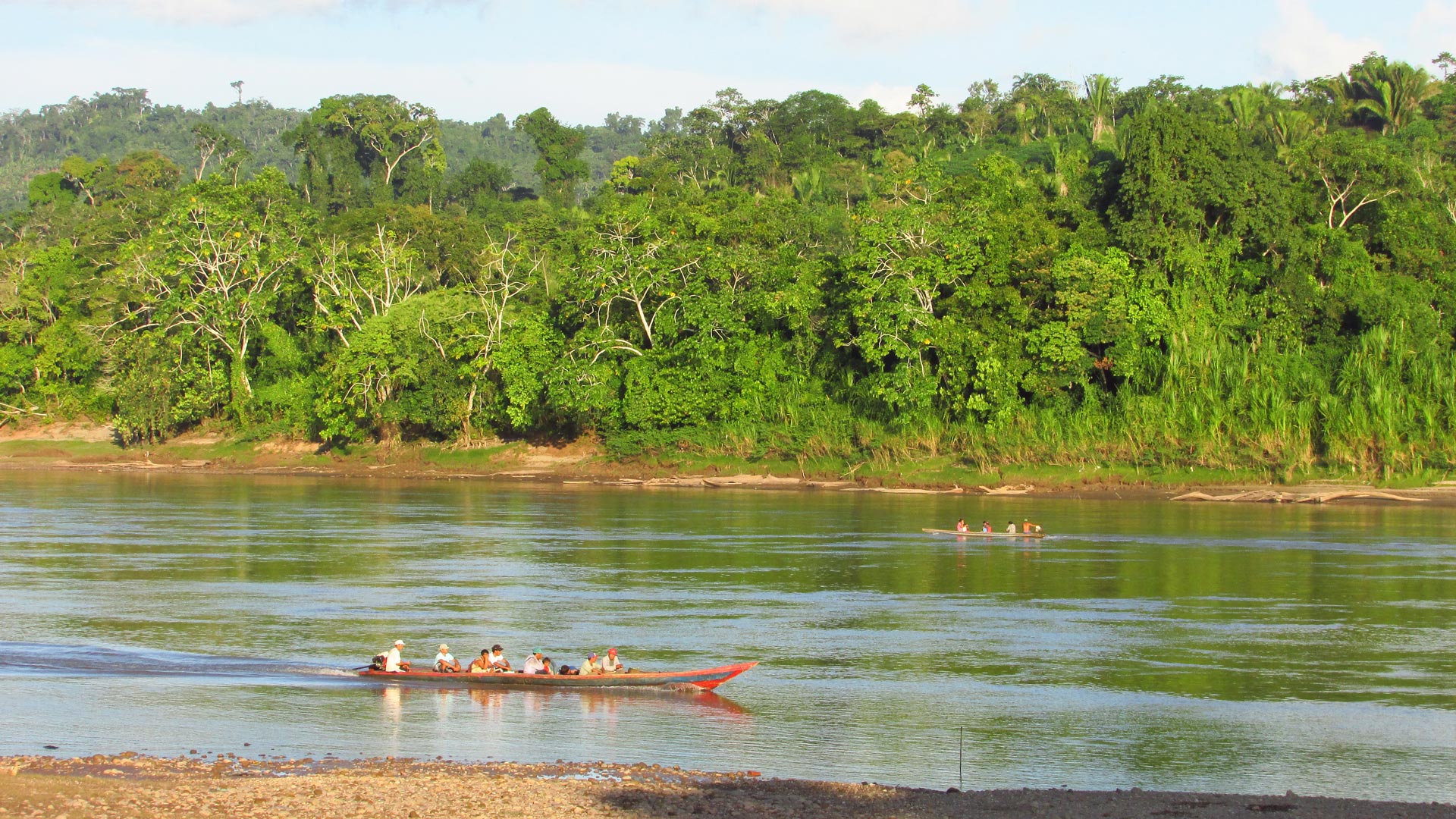
Day 3 – Chazuta
Today you continue your rural stay with the discovery of this lovely community of Chazuta.
You will leave for an excursion on the river. This river is the « road » which leads to the farms downstream from the village, in the middle of the jungle. This is also the route used by the traffickers.
Once arrived, you will make a tour through the cocoa farm, learn about the different species and techniques. After that, you can hike to the waterfall and relax. Return to Chazuta.
Day 4 – Chazuta – Lamas – Moyobamba
Today you say good bye to your host family in Chazuta. You leave for the village community of Lamas – about a 2-hour drive.
Lamas is known for its native Quechua-speaking community. They make their own clothes and make a healthy living from locally produced food. You will visit the village of Lamas, and local native craft shops.
Lunch at Lamas.
You will then continue your route to Moyobamba, the capital of the San Martin region – about 2 hours.
Tonight you stay at La Casa de Seizo, where a charming Peruvian couple will take care of you. Seizo cooks extra fresh produce and fish from its own breeding farms. They will serve you a most tasty dinner.
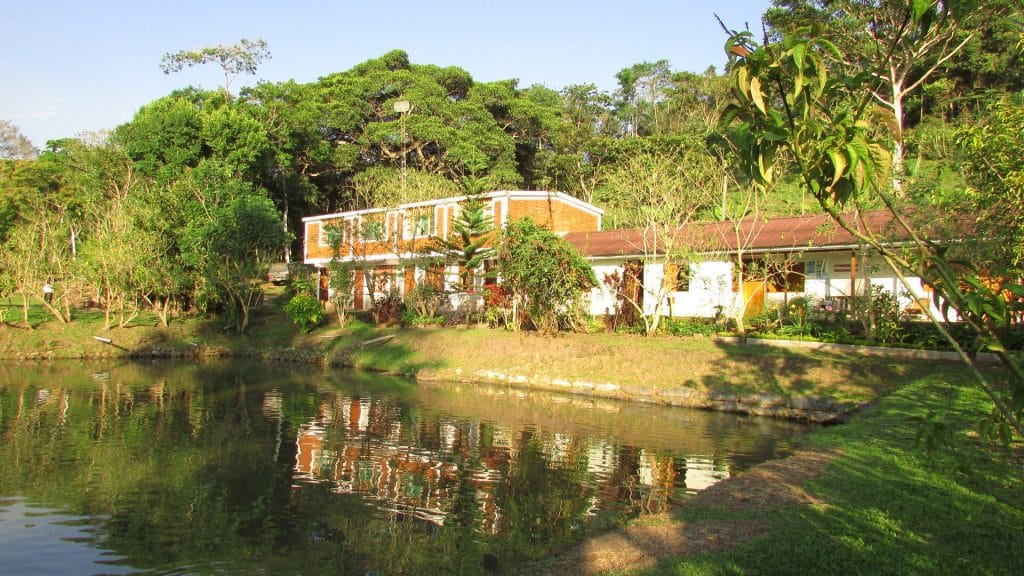
Day 5 – Moyobamba – Cuispes
Departure in the morning after breakfast from Casa de Seizo to Rioja.
We will join the Santa Elena Nature Reserve. It is a reserve held by a community in the region organized as a tourism association. They will make you discover the charms of nature thanks to a canoe tour. You will be able, with luck, as always, to see monkeys, birds and extraordinary varieties of trees such as the walking tree or another to which the criminals intended to be tortured by ants were attached.
On the road, you will have lunch 40 minutes away in a private reserve held for over 30 years now by Senor Hugo Vela, a great player in the region in terms of community rural tourism. He recovered this marshland to make an incredible reserve. You will taste the specialty of Riojo, the Avispa Juane.
After that, no doubt you will be lulled to sleep for the 3 hours of road you have left to travel today. This road is called Belaunde, from Fernando Belaunde, name of the president of the republic of the 1960s during the legislature of which it was built to connect in the north of Peru the eastern and western parts of the Andes mountain range.
You cross the Andes, absolutely splendid and changing landscapes, from 800 m altitude in Moyobamba, you climb up to more than 2,000 m at the level of Lake Pomacochas to descend to Pedro Ruiz and go up to 1,800 m, altitude of Cuispes. You have left the San Martin region for the Amazonas region.
This is where you join your next host family, where you will be staying in Cuispes for the next few days and share the meal with them before sleeping in this friendly village of 400 inhabitants.
Dinner and overnight stay in a local, rural stay.
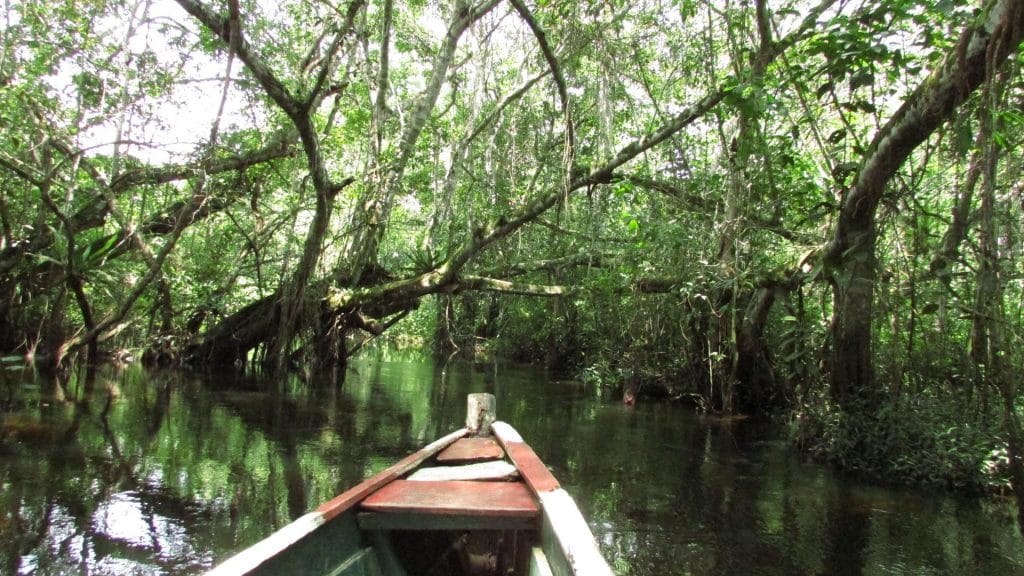
Day 6 – Rural Homestay in Cuispes – Rural Activities
On the menu of activities offered by this community during your rural stay, you have several options. You might want to spend some time with Rosita to walk to her coffee farm and learn about the coffee production process.
Or maybe you prefer to join Wilder and see his beehiving activity with a beautiful view of the surrounding Andes and the waterfalls (in rainy season).
You might want to participate in a bread workshop with Elisa. Bread in the region is not limited to one or two kinds, there are lots of them, different, often sweet. People from the region Amazonas love their bread, they even have it sent to Lima !
At the end of the day, you join your host family for dinner.
Day 7 – Cuispes – Hike to Yumbilla
This morning a local guide from the tourism association will guide you on a hike to the famous Yumbilla waterfall. Along the way you come across other waterfalls, each one more beautiful than the other.
Be attentive and respectful of this magnificent primary forest in which you will be walking. It is the pride of the inhabitants of the region and you may meet the famous « gallito de las rocas » or « rock rooster », the national bird of Peru.
With a supplement, you can choose the initiation to the Canyoning activity in one of the many waterfalls of this valley. Members of the Cuispes Association are receiving ongoing training in this adventure activity.
Your respective families will prepare a picnic basket for you to take with you and taste near the waterfalls.
Back to Cuispes and your host families in the middle, late afternoon when you can enjoy the village.
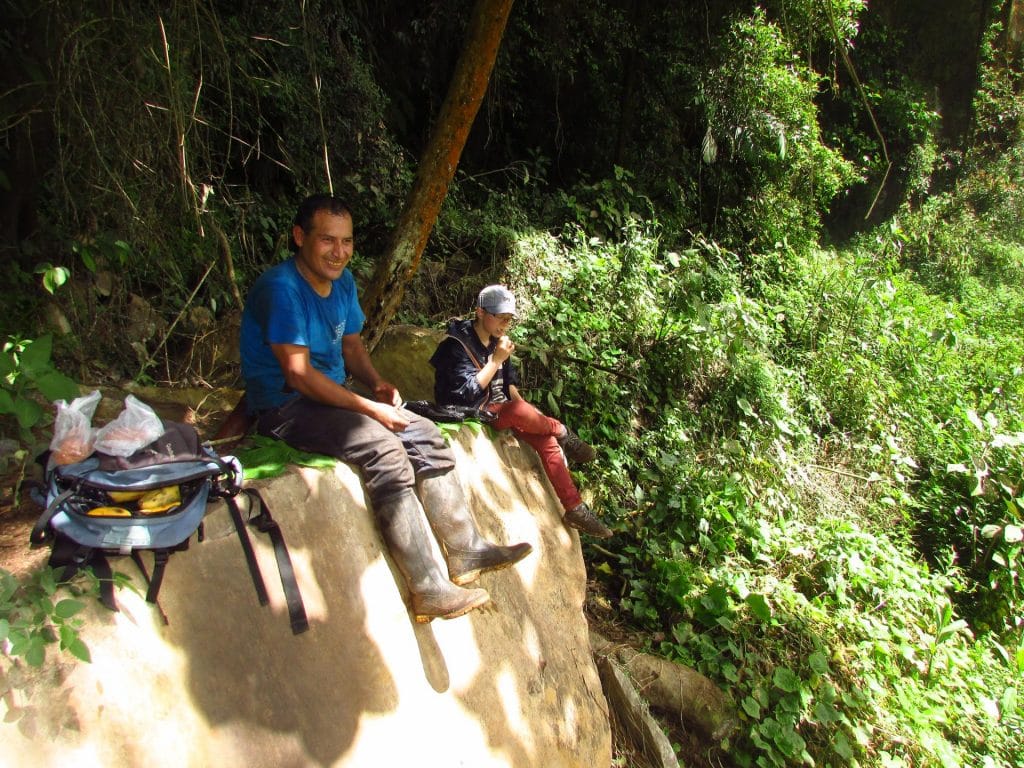
Day 8 – Kuelap
Departure from Cuispes and transfer to the cable car station in Tingo Nuevo, approximately 1 hour 30 minutes. After climbing up with the cable car which takes you in 20 minutes from 1,900 to almost 3,000 m above sea level, you will follow a 2 km-walk to the entrance of the site. You will then visit the archaeological site of Kuélap that belongs to the Chachapoya culture.
It is a fortified citadel which was built on a high plateau at an altitude of 3,000 m from 500 AD onwards. It is surrounded by an impressive wall almost 600 m long, 20 m high. The visit of Kuelap will take at minimum 2 hours, and you then will have lunch at Sra. Teodulas coffee shop.
Finally you descent back to Tingo Nuevo. From there you continue to Leymebamba, about 2 hours by car. Welcome in your host family. Sr. Jabier will be happy to be your host for the following days. Dinner and overnight.
Day 9 – Rural Stay in Leymebamba – Activities in the Community
After breakfast you leave accompanied by your guide to the Mummy Museum of Leymebamba. It is well known for hosting more than 200 mummies and their funeral offerings which were discovered in 1997 at the Condor Lake. This museum is a magnificent example of international cooperation and the work carried out by a community to help the development of its village. In the Leymebamba Museum you will also find an impressive collection of Peruvian Quipus.
Free afternoon to explore the surroundings of Leymebamba.
Dinner and overnight in your homestay.
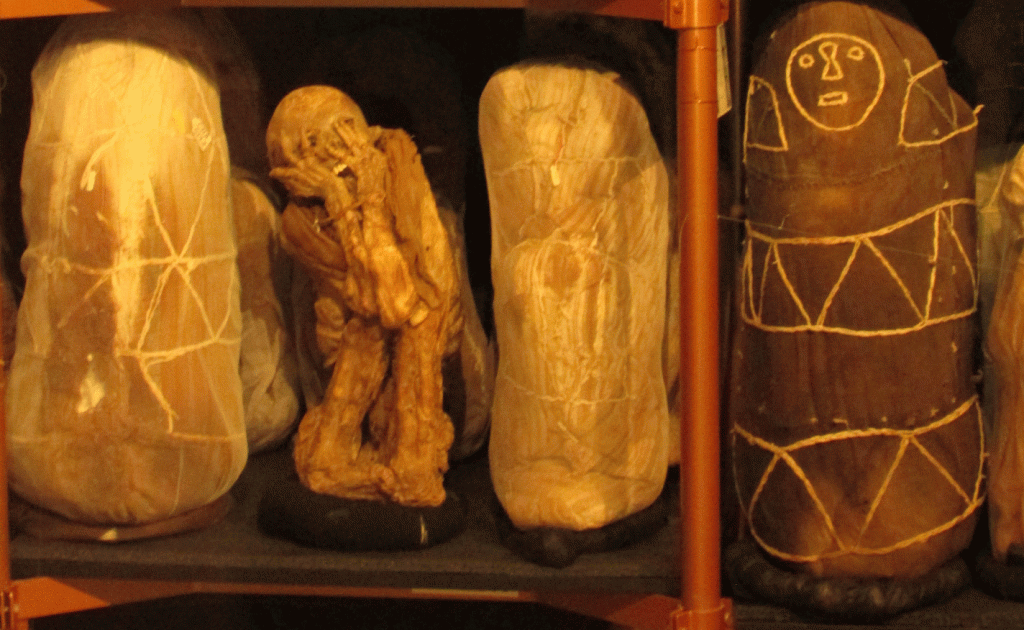
Day 10 – Leymebamba – Activities in the Communities
Different members of the Leymebamba community invite you today to discover traditional activities such as weaving. Sheep wool is used to design lovely useful woolen objects. You will see the women using the traditional hand loom. The use of this device will remain a mystery for the non-expert and will only strengthen our admiration for the patience and dexterity of these women.
Another traditional activity in the Leymebamba region is « ganadería » or animal husbandry, mainly of cows.
The region has a pleasant climate, beautiful pastures, it’s green. Together with the farmer, you collect the milk and make fresh cheese. Tasted with natural honey, it is a delight.
You will be able to visit the farm of a family from Leymebamba who will explain you the life of a breeder in the upper valley of Utcubamba in the 21st century.
The story of sculptor Miguel Huaman is very unique. He participated in the rescue operation of the objects discovered at the Laguna de los condores in 1997.
After his initial curiosity for the wooden carved objects, he started to reproduce them. After his first sale at the Mummy Museum, encouraged, he decided to dedicate himself to this activity of sculptor. Today he provides the Museum with replicas of all the wooden objects from the Chachapoya period. For the past few years he has sold his sculptures even abroad. A great story for this man who would like to open his workshop to students.
Day 11 – Leymebamba – Cajamarca
You are leaving your family in Leymebamba this morning to take one of the most impressive roads in Northern Peru. It connects Leymebamba to Cajamarca.
If in terms of kilometres, it doesn’t seem very far, you will have to consider the day to reach Cajamarca. The elevation gain is impressive: from Leymebamba at 2,200m you will climb to 3,600m. From this altitude, you have an incredible view of the Andes, the Marañon valley and… the road you will take. We descend to 800 m altitude to cross the river. Then we head up again at 3,100 m and arrive at the end of the afternoon at Cajamarca at 2,800 m. Challenging but splendid. We change ecosystems several times in the same day.
Box lunch on the road. Overnight in hotel in Cajamarca.
Day 12 – Cajamarca
Cajamarca is known to be the city of « el encuentro » (the encounter). It is the encounter between the 2 worlds, the old and the new, the Spanish and the Incas. Or how 180 soldiers led by Pizarro fomented the destruction of an all-powerful empire with an incredible bluff.
The Incas, convinced that they had met the Viracocha god, allowed themselves to be manipulated until the fatal outcome of the Inca, executed by their captors.
In Cajamarca you can visit the last Inca construction visible in the city, the « ransom room ». It is the place where the Inca Atahualpa was imprisoned for months. Tons of gold and silver were brought in to pay his ransom. Although the Incas had made the payment, the Spaniards executed Atahualpa on the square in 1533.
You can also visit beautiful colonial-era churches such as Belén Church.
Others will prefer to visit the exteriors of the city with the Cumbemayo aqueduct or the Ventanillas, a burial site in Otuzco. You can book these tours the night before in one of the agencies in the Place de Cajamarca.
Late in the evening, after having dinner (not included), you take your night bus to the coast and Chiclayo.
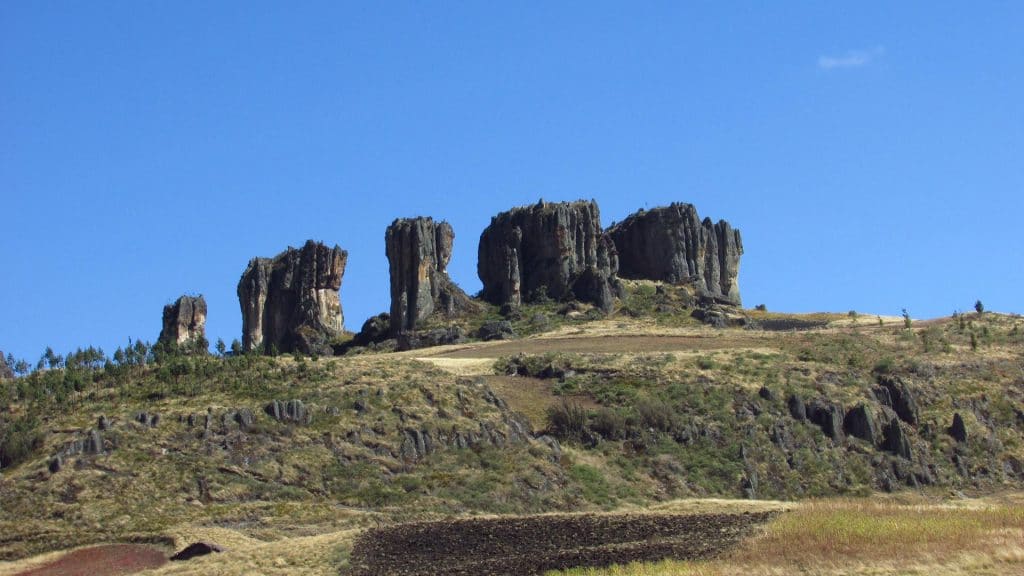
Day 13 – Chiclayo
Our driver will pick you up upon your arrival in Chiclayo and bring you to Túcume, 25 kilometres outside of Chiclayo, where you will join the host family of your rural stay for the next few days.
You will leanr how to make the famous Pachamanca, a long-simmered dish, made with meat and vegetables.
While this is cooking, you have time to visit the pyramids and the Túcume museum.
This archaeological site was the last capital of the Lambayeque and Chimu kingdom that flourished before the arrival of the Incas in Northern Peru. This complex is one of the most important pre-Hispanic monuments on the North Coast of Peru. Its size was about 220 acres. It has 20 monumental architectural buildings which have been associated with other buildings: mounds, patios, canals, walls and other structures which are the reflection of a planned growth system and a very complex social structure.
Here, the Lords of Túcume lived with the luxury of demi-gods in huge palaces. The latter were decorated with drawings of mythical and ritual content. Inside they were furnished and decorated with exquisite jewelry, surrounded by priests, administrators, servants and gifted craftsmen. The museum is very interesting, didactic and educational.
Back from your visit you will taste your Pachamanca.
The Túcume community invites you in the afternoon to discover native cotton painting with natural colors. Julian Bravo, craftsman will introduce you to this art for your rural stay.
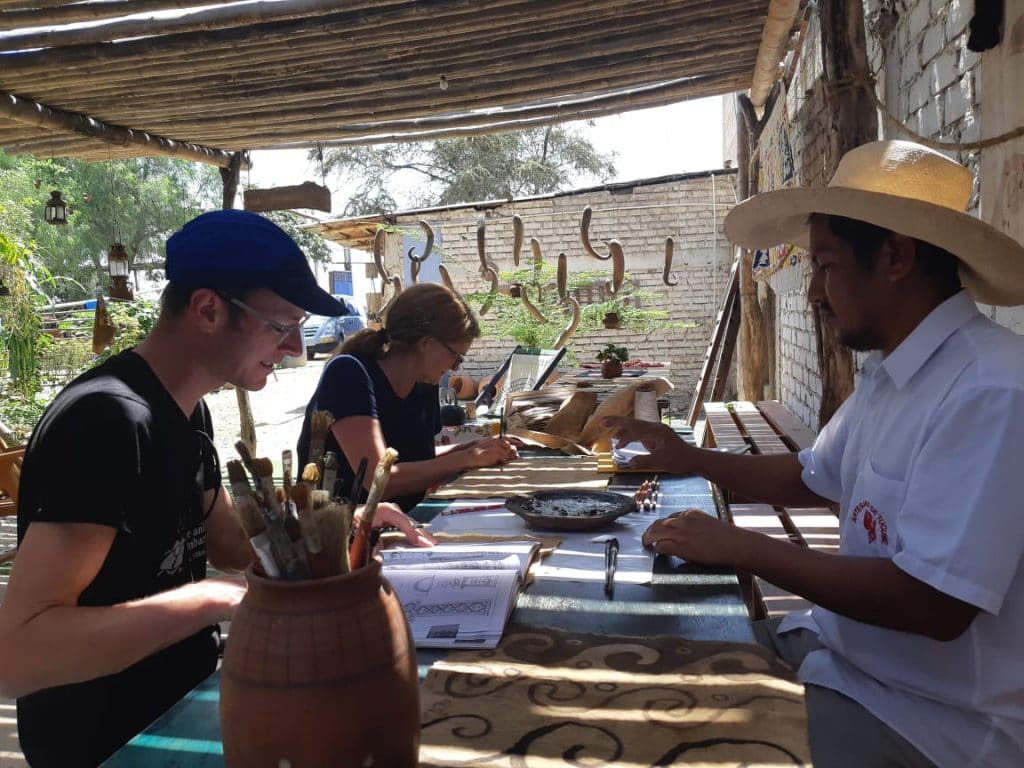
Day 14 – Chiclayo – El Brujo – Trujillo
You are leaving your host family from Túcume this morning, but your rural stay continues.
First, you will visit one of the most impressive museums in Peru. This is the Tumbas Reales Museum or the Royal Tombs Museum. It is located in Lambayeque, 10 kilometres from Chiclayo.
The discovery in 1987 of the tomb of the Lord of Sipan in 1987 was compared at the time to that of the tomb of Tutankhamun in Egypt.
The museum shows the wealth and ostentation in which the Lord of Sipan was buried in his truncated pyramid. There are gold and silver, incredibly fine fabrics, religious and military emblems and many ceremonial utensils.
From Chiclayo we continue further south towards Trujillo. About 60 kilometers north of the latter, we stop to visit the archaeological site El Brujo.
It is one of the most important archaeological sites on the North Coast of Peru. It has a long occupation sequence which began in the pre-ceramic period (3000 BC). On the other hand, it is the Moche culture (0 – 700 AD) which left the most evidence in the region. Two major discoveries have given even more importance to this complex. On one side, the large adobe pyramid 30 m high where you can still see the high relief drawings of the Mochica culture of the god « Decapitator ».
It was also there that in 2006 the tomb of another dignitary of this Moche culture was discovered, the lady of Cao. We also know her under the name of the Lady of Tattoos. In her tomb were discovered pottery and ornaments in gold, silver and copper. Never before the mummy of a Peruvian woman was found in her own uniform from the warrior aristocracy.
It seems that this sovereign was a key figure in the court of the Lord of Sipan which we have already mentioned above. Fascinating!
At the Cao Museum we learn everything about the everyday and symbolic universe of the inhabitants of this part of Peru. We will compare the customs and beliefs of the past with those of today. Finally, we end with the most enigmatic discovery of recent times: The Lady Cao.
In 2017, the lady of Cao made the news with the 3D realization of her portrait. We continue on to Trujillo, the « city of eternal spring ».
Day 15 – Trujillo
Trujillo is a big city with a very nice colonial style center.
The region is also recognized for having been the center of major pre-Incas cultures, namely the Moche and the Chimu.
You will first go to the Chan Chan archaeological complex and the Nik-An Palace. Chan Chan has been listed as a UNESCO World Heritage Site. It was the capital of the Chimu Empire which flourished in this region after the fall of the Moche Empire and covers an area of approximately 20 km2. The central part is formed by a set of ten fortified enclosures (known as the Citadels) and pyramids. The Nik-An Citadel is the greatest illustration of the importance of water, particularly the sea, that the culture of the Chimu revered.
The high reliefs on the walls represent fish. As they are positioned towards the south and the north, they can be interpreted as the two currents on the Peruvian Coast. You have indeed the Humboldt (cold current) which comes from the south and the Child (hot current) which comes from the north. We also see rhombus (fishing nets), pelicans and anzumitos (a mythical animal between sea lions and otters).
You will continue the discovery of the civilizations of these regions of the north coast of Peru with a visit to the Temples of the Sun and the Moon and their museum. The Temple of the Moon consists of several temples built on top of each other over hundreds of years. In addition, there are 12,000 m2 of polychrome murals. Its iconography and aesthetics are of universal value reflecting the designs that have been used for 700 years. On the top part of the adobe brick walls you can see the ruins of these walls. They are decorated with multi-colored religious symbols, the most important is Ai-Apaec or « The God of the Mountains ». This temple represents an exceptional testimony of the traditional Moche Culture.
At the museum we will see aspects of the life of the Moche people, their city and their environment. We will also see the worship of power and the mountain god (Ai-Apaec). We are sure you will like to rediscover Moche iconography and architecture.
But the Mochica culture is not dead, it is still alive. First, we will visit the pottery and artisan workshop. The Mochica culture has created its own image, in realistic and expressive pottery. The Moche gave an aesthetic and thematic quality to their ceramics. It has become the best testimony to everyday life and the spiritual life of its inhabitants. In the workshop you can watch the production, techniques and materials that were saved by the inhabitants of the Mochica countryside.
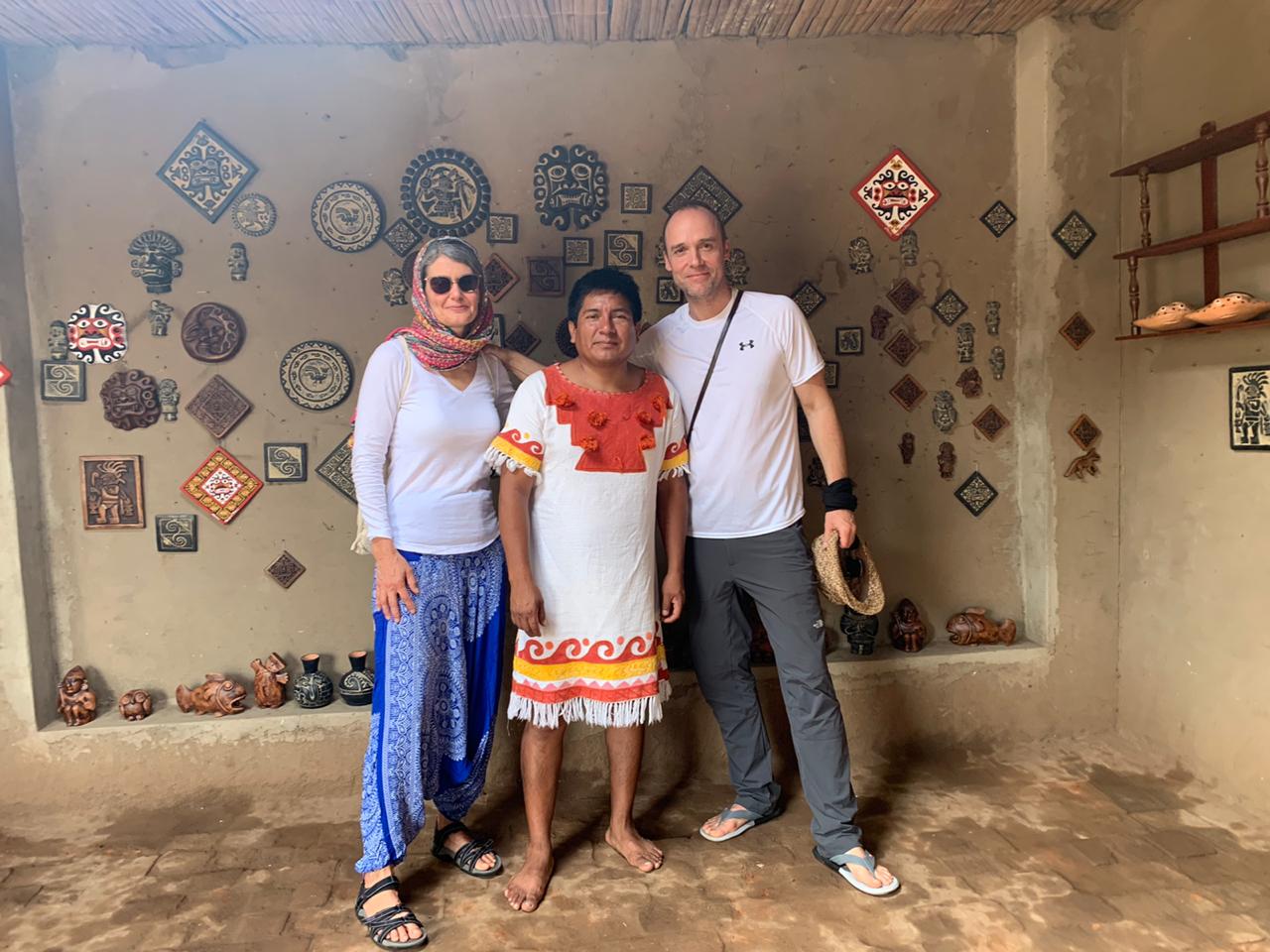
Day 16 – Trujillo – Departure
Transfer to Trujillo airport for your flight Trujillo – Lima at the agreed time.
Budget
We provide our tour plans as an example for you to get inspired and an idea of how your travel in northern Peru could look like.
Once you have your trip in mind, we are happy to create with you your dream trip according to the length of your stay. We suggest you interesting sites to visit, nice places to stay, how to get there and if you should choose a guide to travel with you in order to discover a more confidential side of Peru.
Contact us by email at info@phimavoyages.com or by our contact form. We will get back to you within 24 hours.
This program includes:
- Transfer to/from airports
- Guides
- Entrances to archaeological sites and natural reserves
- Activities and excursions as indicated in the program
- Meals as indicated in the program
- Land transport according to the program, private (by car for 2 people, in Mini Van H1 for 3 or more people), by night bus, taxi / combi
This program does not include:
- International and national flights
- Airport taxes or visa fees
- Excess baggage charges
- Additional nights following flight cancellations
- Insurance
- Meals not mentioned in the program
- Alcoholic beverages
- Laundry service
- Phone calls
- Re-confirmation of international flights
- Bank transfer fees


